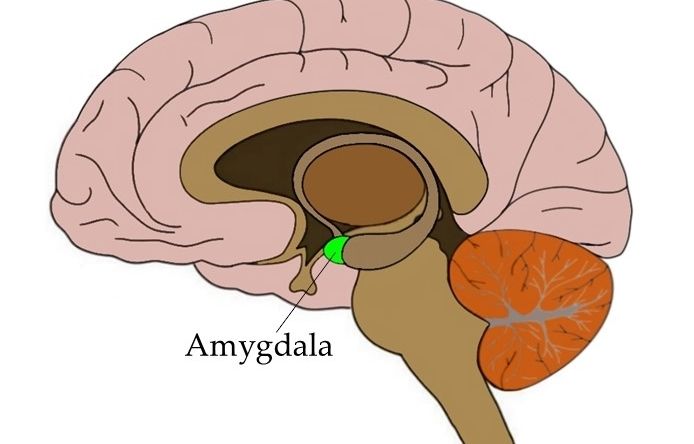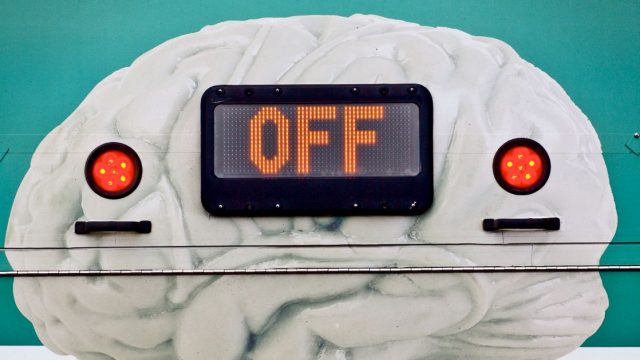If you frequently have knee-jerk reactions or have trouble managing your emotions, you may have an overactive amygdala. Your breathing becomes shallower, your voice or limbs may tremble, your throat tightens, and your heart rate rises.
You are not at your best when the amygdala is in charge. You need to learn how to control your nervous system while also learning how to interact in more liberated and beneficial ways. So how can the amygdala be turned off? To learn the answers, continue reading.
What Is The Amygdala?
The amygdala is a collection of almond-shaped brain cells that are situated close to the base of the brain. One in each hemisphere (or side) of the brain, everyone has two of these cell groups.
The amygdalae help define and regulate emotions. Additionally, they keep memories and relate those memories to particular emotions (such as happy, sad, or joyful). These are known as emotional memories.
A limbic brain region that includes the amygdala. The brain’s limbic system is made up of a number of intricate, interconnected structures that control a person’s emotional and behavioral responses.
Symptoms Of An Amygdala Hijack
The bodily reaction to stress is what causes the symptoms of an amygdala hijack. Your brain releases the stress hormones cortisol and adrenaline when you are under stress. These two hormones, which the adrenal glands secrete, prime your body for either fighting or running.
Your body reacts to stress in a variety of ways thanks to these stress hormones working together. They:
- increase blood flow to muscles, so you have more strength and speed to fight or flee
- expand your airways so you can take in and use more oxygen
- increase blood sugar to provide you with immediate energy
- dilate pupils to improve your vision for faster responses
When these hormones are released, you may experience:
- rapid heartbeat
- sweaty palms
- clammy skin
- goosebumps on the surface of your skin
Unsuitable or irrational behavior could result from an amygdala hijack. You might also experience other symptoms like embarrassment and regret following an amygdala hijack.
What Effect Does The Amygdala Have On Life?

- The amygdala’s function is to control the fear reaction.
- Your safety and protection are its main concerns.
- Through incoming data from your senses, it listens in on your surroundings. (The thinking brain doesn’t get information until it does!)
- It is to blame for stress, anxiety, trauma, and fear’s overall experience as well as its physical effects, undesirable symptoms, and overall perception (i.e., beating heart, sweaty palms, hot flashes, short breaths, stress hormones).
- It functions much more quickly than the thinking brain and is a “shortcut.” In a split second, it causes physical and emotional responses.
- It serves as a danger detection alarm system.
- You have those uncontrollable knee-jerk reactions because your brain primarily draws on unconscious memory.
- It’s connected to the Sympathetic Nervous System (SNS) and the “Fight or Flight” stress response)
- Some brain functions can be taken over by the amygdala. Neuroscientist Joseph Ledoux asserts that there are significantly more neural connections between the amygdala and the cortex (thinking brain) than there are between them. Because of this, when the amygdala is overactive we struggle to make rational decisions.
How To Turn Off The Amygdala?
Most people these days have an amygdala that is overactive. Whether it stems from a challenging conversation, receiving a rude reply, or sensing intimidation in a setting. The stifling effects of an amygdala trigger will always be felt by both you and me. Being human entails it. However, we can control our bodies and minds to be our most triggered selves. Here are four steps to do it:
Realize You’ve Been Triggered
The capacity to reflect on one’s own thinking, or metacognition, is a higher-level ability mastered by top performers. You too can do this. Notice alterations in your tone, tightness in your stomach, or an unexpected desire to run or erupt. In these moments, say to yourself (and sometimes to the person in front of you, if you have high trust), “At the moment, I feel triggered.”
Let Go Of The Story
Musho Hamilton makes the excellent suggestion that this is the most challenging step. “We need to completely let go of the thinking and judging mind,” she explains. “The mind immediately starts to race with all kinds of challenging ideas and tales about what is happening when we feel threatened.
But we must be prepared to put the story aside for a moment. Not that we’re wrong, but when the nervous system has calmed down, we will be much clearer in our perceptions.”
Release The Tension
According to Steven Kotler and his team’s research at the Flow Genome Project, to be your best self, you have to move past the struggle of anxiety to a “release.” This calls for perseverance through amygdala hijacking, breathing, and mental stillness.
Nitric oxide will start to flow through your body when you can persevere through the release, which will make your mind clearer. This is the space right before what they call “flow.”
Remember Who You Are
When Simba’s father’s spirit encourages him in the film The Lion King, I adore that line. The amygdala-hijacking years of high school were when I first saw a movie in a theater. I became aware of the centering effects of a distinct identity as I sobbed my way out of the theater in high school (which was really embarrassing). “Remember who you are.” To know my value doesn’t come from the approval or reaction of others freed me to be my best self.
What Can Be Done To Prevent An Amygdala Hijack?
Knowing what causes the response so you can avoid it is the best way to stop an amygdala hijack. To help you better control your body’s reactions when you experience the reaction, you can also practice techniques like mindfulness.
Stress can cause the amygdala to go into fight-or-flight mode as a result of emotional, mental, or even physical factors. Take a moment when you start to experience an amygdala hijack. Note your emotions and the events that brought you to this point. Recognize any physical changes you may be going through.
Think about the circumstances that led to these emotions as well. Although the majority of people’s triggers (stress, rage, and aggression) fall into the same broad categories, each person will also have specific triggers.
These represent the fundamental actions of mindfulness practice. Mindfulness helps you be more present and engaged in your responses and choices.
By practicing mindfulness, you can assess things like how you’re feeling and what motivates you. You can develop the ability to respond logically and rationally. This is another way of saying that you can relinquish control to your frontal cortex and take it away from your amygdala.
Being mindful requires practice. When you first try to concentrate on your body and feelings, it’s simple for your mind to wander. However, as with so many other things, practice makes perfect.
Additionally, it’s crucial to apply these strategies consistently, not just during times of intense emotion.
Actively controlling your breathing is one way to assist in maintaining mental focus while practicing mindfulness. Pay close attention to your breathing in and out. Pay attention to how you are feeling in the present moment and how your body is responding to the air.
The two methods listed above are the most effective ways to stop an amygdala hijack, though there may be others. By avoiding triggers, you can prevent your amygdala from having the opportunity to override your emotional control. You can slow down and stop emotional reactions by practicing mindfulness.
Conclusions
Because it wants you to be prepared to respond with fight, flight, or freeze, an overactive amygdala will physiologically disagree. You can stop this amygdala hijacking, though. Your brain’s irrational emotional responses are something you can learn to control. This can be accomplished by slowing down, inhaling deeply, and changing your focus.

